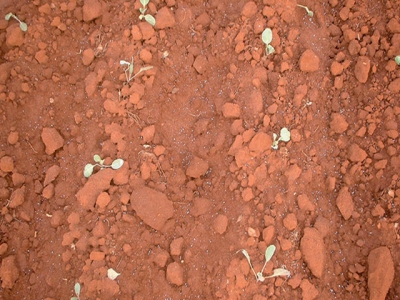Regulating nitrogen in vegetable crops

Farmers have long been advised to use standard fertiliser mixtures for crops as a matter of course.
Much of this broadcast nitrogen can be lost before the roots have a chance to reach it.
But each soil type and land is different, so it is far better to base your basic fertiliser programme on the results of a good soil analysis.
The cost and effort will save you a great deal in the long run and increase your success rate. The required elements can be determined from the analysis for each crop, and applied at or before planting.
Nitrogen, the accelerator that influences the vigour of the crop, is the exception and requires a different approach.
For one thing, nitrogen can be lost through leaching in a single day in some circumstances, so it does not pay to apply too much before it is needed.
Many fertiliser mixtures applied before planting contain much more nitrogen than most crops require during the early stages of growth. Let’s take cabbages as an example.
If you apply 600kg of 2:3:4 (24), there will be 133kg of nitrogen in the mixture, yet cabbages require only about 200kg in total.
In addition, because the nitrogen is in the ammonium form, it is not readily available immediately after application.
Broadcast and worked in by hand, very little of the nitrogen, when converted to nitrate, can be accessed by the young seedlings. For a few weeks, only the fertiliser that is near the plant can be used by the plant.
The rest is vulnerable to leaching – all it takes is one heavy downpour, and there will be no nitrogen for the roots to find. If no leaching occurs, there will be no problem, but this is the exception, not the norm.
Not only is nitrogen lost before the plant can use it, you won’t even realise it is gone until it becomes obvious from the appearance of the crops, by which time losses will have occurred. Instead, avoid adding nitrogen when you plant a crop like this.
Then, after planting is completed, drench the plants with a handful of LAN in 8l to 10l water for 2 000 plants. This places enough nitrogen just where the plants require it at very little cost.
After four to five days, band-place a light dressing of LAN near the plants. Repeat with a heavier application two weeks later. You can now broadcast the third application if you wish, as the roots will have filled the spaces between plants.
This is the most economical use of nitrogen – and will help you avoid many potential problems.
Nitrogen needed at different stages
Many crops require their nitrogen at different stages. This is important to bear in mind as some producers think they can increase yields simply by increasing the amount of nitrogen applied.
Beans, for example, may need a little nitrogen soon after emergence to get the plant frame up to size. When they reach the flowering stage, the nitrogen level must be lower.
Too much nitrogen at this stage will drastically decrease yield. Increase the amount applied when the pods are half formed.
In general, you should be particularly careful not to overdose fruiting crops with nitrogen; leaf crops are able to withstand more.
Even here, there are exceptions. Too much nitrogen at the head-forming stage will over-stimulate lettuce, leading to excessive leaf growth at the expense of head formation.
Tomatoes are also often given too much nitrogen during early growth at the expense of fruit set. The plant uses more nitrogen later on, when there are more leaves and a large quantity of fruit.
Give some thought to working with nitrogen – it will make your farming safer, easier and more profitable.
Có thể bạn quan tâm
Phần mềm

Phối trộn thức ăn chăn nuôi

Pha dung dịch thủy canh

Định mức cho tôm ăn

Phối trộn phân bón NPK

Xác định tỷ lệ tôm sống

Chuyển đổi đơn vị phân bón

Xác định công suất sục khí

Chuyển đổi đơn vị tôm

Tính diện tích nhà kính

Tính thể tích ao hồ



 Organic Gardening Tips For Raised Beds
Organic Gardening Tips For Raised Beds  5 Garlic Growing Tips You Don’t Want to…
5 Garlic Growing Tips You Don’t Want to…